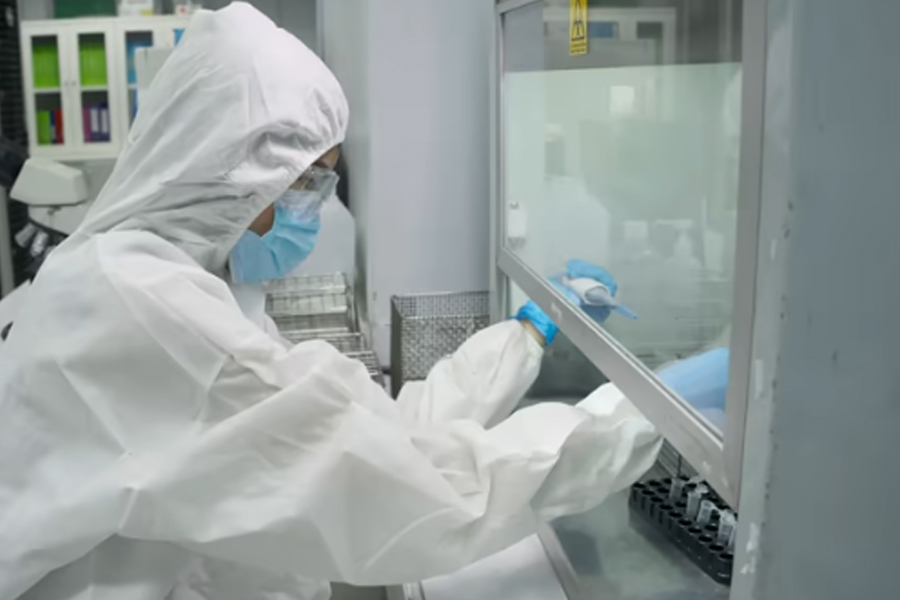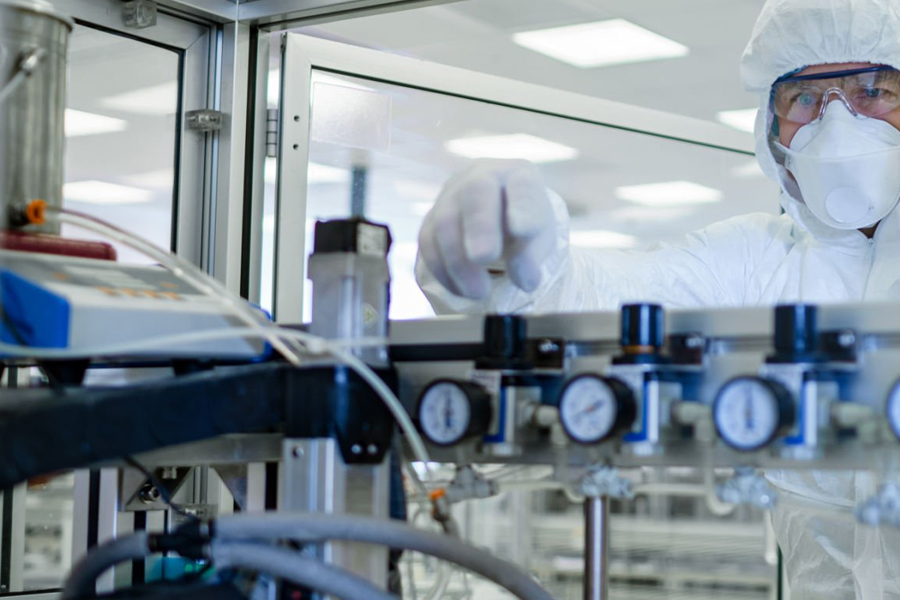Datetime:2025-11-07
In the field of medical device manufacturing, precision, cleanliness, and safety are core requirements. Medical sheet metal processing, with its targeted process design and precision manufacturing capabilities, has become a core processing solution for key products such as medical device housings and biosafety cabinets. Based on medical-grade standards, it adapts customized processes to the specific needs of medical devices, ensuring both structural stability and operational safety while meeting the cleanliness and sterility requirements of medical settings, providing fundamental support for the reliable operation of medical equipment.
The Core Process System of Medical Sheet Metal Processing (Adapted to Medical Scenarios)
Medical sheet metal processing differs from ordinary sheet metal processing in that its core lies in "medical-grade precision" and "cleanliness adaptability," forming four core process modules that precisely match the manufacturing requirements of medical device housings and biosafety cabinets:
Precision Laser Cutting Process: Utilizing fiber laser cutting technology, this process processes medical-grade sheets such as 304 stainless steel and aluminum alloys, with cutting precision controlled within ±0.1mm. This allows for precise shaping of complex holes in equipment housings (such as heat dissipation holes and interface holes) and the observation window frames of biosafety cabinets. The non-contact cutting method avoids sheet deformation and surface damage, ensuring subsequent assembly accuracy.
Precision Bending Process: Utilizing a CNC bending machine with customized molds, high-precision bending of sheet metal is achieved, with a bending angle error ≤0.3° and a minimum corner radius of R1.5mm. For critical structures such as the corners of medical equipment shells and the sealing grooves of biosafety cabinets, the bent surfaces remain smooth and scratch-free, laying the foundation for sealing performance and cleanliness protection.

Clean Welding Process: Employing low-spatter welding technologies such as argon arc welding and laser welding, combined with medical-grade welding materials, reduces weld impurities and spatter. Inert gas protection is used during welding to prevent weld oxidation, ensuring a weld tensile strength ≥350MPa. The welds are smooth and flat, without obvious protrusions or gaps, preventing dust accumulation and bacterial growth, meeting the sterile environment requirements of biosafety cabinets.
Medical-grade surface treatment processes: Optimized treatment solutions for different usage scenarios: Medical equipment shells mostly use electrostatic powder coating (coating thickness 60-80μm), selecting non-volatile, disinfection-resistant medical-grade powders that can withstand frequent wiping with alcohol and chlorine-containing disinfectants; the inner walls and work surfaces of biosafety cabinets undergo passivation treatment + antibacterial coating, with an antibacterial rate ≥99%, while improving corrosion resistance and avoiding corrosion from chemical disinfectants.
Medical sheet metal processing's core contribution to medical equipment shells: As the "protective barrier" and "functional carrier" of the equipment, the manufacturing quality of the medical equipment shell directly affects the stability and safety of use. The value of medical sheet metal processing is mainly reflected in three aspects: Precision matching, ensuring the installation of internal components: Through precision cutting and bending processes, the hole positions and slot dimensions of the shell are precisely matched with internal sensors, pipelines, circuit boards, and other components, with installation gaps ≤0.2mm. This avoids component loosening or functional failure due to dimensional deviations, especially suitable for the assembly needs of precision equipment such as ultrasound machines and monitors.
Sealed Protection, Isolating from Pollution and Interference: Utilizing a seamless bending and sealing strip embedding process, the joints of the outer shell achieve a sealing performance meeting standards (protection level ≥ IP54), effectively preventing the intrusion of dust and liquids in operating rooms, laboratories, and other similar environments. It also reduces external electromagnetic interference, ensuring the stable operation of the equipment's electronic components.
Safe and Compatible for Medical Applications: The surface treatment process prevents the release of harmful substances, complying with medical industry environmental standards (such as RoHS). Rounded corners prevent injuries to medical personnel during operation. Furthermore, the optimized load-bearing structure of the outer shell ensures that the equipment does not deform during movement and handling, extending its service life.
Medical Sheet Metal Fabrication: A Key Support for Biosafety Cabinets
Biosafety cabinets, as core equipment for microbiological experiments and clinical testing, have extremely high requirements for sealing, cleanliness, and structural stability. Targeted medical sheet metal fabrication processes directly address these core challenges:
Achieving Sealing Performance and Preventing Biological Risks:** Through a combination of laser welding and precision bending, the cabinet body and operating chamber of the biosafety cabinet form a sealed space with a negative pressure leakage rate of ≤0.05%. This effectively prevents the escape of harmful microorganisms, protecting the safety of operators and the experimental environment, and meeting BSL-2 and BSL-3 biosafety standards.

Structural Precision Ensures Airflow Organization:** The air supply channels and return air ducts inside the cabinet are precisely dimensionally controlled through CNC machining. The smooth, burr-free inner walls of the channels reduce airflow resistance and turbulence, ensuring uniform coverage of the operating area with clean airflow, maintaining a Class 100 cleanliness level within the chamber, and preventing cross-contamination of experimental samples.
Structural Precision Ensures Airflow Organization:** The internal air supply channels and return air ducts are precisely dimensionally controlled through CNC machining. The inner walls of the channels are smooth and burr-free, reducing airflow resistance and turbulence, ensuring uniform coverage of the operating area with clean airflow, maintaining a Class 100 cleanliness level within the chamber, and preventing cross-contamination of experimental samples. Disinfection Resistance and Cleanliness Adaptability: The antibacterial surface coating and seamless welding process eliminate dead corners in the cabinet, facilitating daily cleaning and disinfection while resisting long-term chemical disinfection. Simultaneously, the optimized load-bearing structure of the workbench can withstand frequent placement and operation of experimental instruments, with deformation ≤0.1mm/m, ensuring the accuracy of experimental operations.
Core Technological Value of Medical Sheet Metal Fabrication (Neutral Adaptability): Compared to ordinary sheet metal fabrication, the core advantage of medical sheet metal fabrication lies in "precise adaptation to medical scenarios," rather than absolute performance superiority. Specifically, this is reflected in:
Compliance Adaptability: All processes comply with the ISO13485 medical device quality management system standard. Material selection and processing procedures meet the medical industry's requirements for non-toxicity, sterility, and corrosion resistance, allowing for compatibility with equipment certification without additional modifications.
Precision Controllability: Through fully digital processing (CAD design → CNC machining → automated inspection), the dimensional consistency error of products in the same batch is ensured to be ≤0.3mm, meeting the quality stability requirements of large-scale medical equipment production.
Scenario-based customization: Process solutions can be adjusted according to equipment type (such as lightweight design of portable medical device shells or large-size cabinet processing of biosafety cabinets), balancing functional requirements with adaptability to usage scenarios.
As medical devices evolve towards precision and minimally invasive procedures, medical sheet metal processing is upgrading towards "higher precision, superior cleanliness, and fuller compliance." This is achieved through digital simulation optimization of processes and the introduction of environmentally friendly processing materials, further adapting to the iterative needs of medical equipment. For medical device manufacturers, the core of selecting a suitable medical sheet metal processing solution lies in matching the product's usage scenario, precision requirements, and compliance standards, achieving a balance between product performance and manufacturing costs.